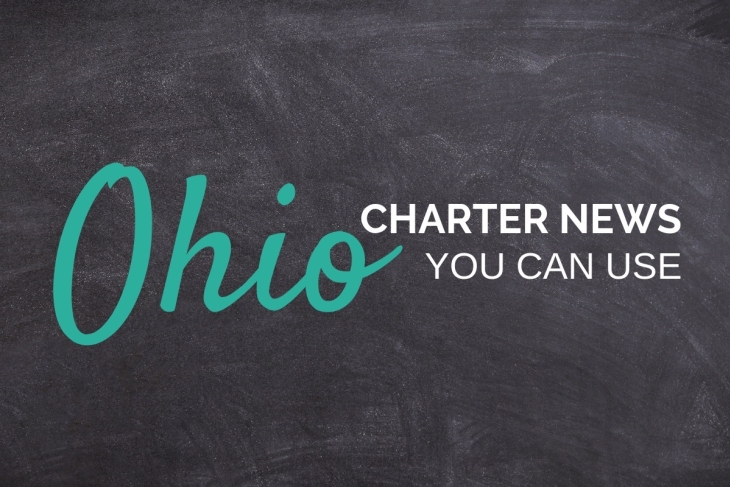School is nearly out, thank goodness.
We had the usual ups and downs. But on balance, our orbit seemed to bend toward normal, didn’t it?
Here’s what we learned:
Lesson #1: We owe the high school class of 2024 an apology.
You got a raw deal. You were born in 2006. We gave you a smartphone for your seventh birthday and made you captive to big tech’s finest algorithms. Your eighth-grade field trip to Six Flags was canceled due to COVID. Ditto for your middle school graduation ceremony. You spent the first half of your freshman year of high school—already a festival of awkwardness—staring at your new classmates on Zoom while we argued amongst ourselves about whether it was safe to re-open buildings. And now, as you are dealing with the stress of applying to college, we messed up the FAFSA. Described in a single New York Times article as “a bureaucratic mess,” “a nightmare,” “convoluted” and “a debacle,” the new application for college aid was so buggy and late, you might have given up completing it altogether. Speaking for the rest of the American adult population, I hope you can find it in your hearts to forgive us because we are counting on you to support us when we are old and infirm. Your childhood—our bad on that one. We will do better.
Lesson #2: We can’t ignore demographic realities forever, but we’re going to try.
School enrollments are down. It’s not an illusion of the pandemic. Some students are never coming back to public schools. Birth rates are sharply lower, too, which guarantees future declines.
Chad Aldeman did a great piece on this for The 74. He shows that just a few years ago, federal agencies were predicting that the number of students would grow modestly over the next decade. Now? Just 13 states are expected to increase enrollment by 2031. The other thirty-seven states (plus D.C.) are slated to shrink.
We might expect that fewer students means fewer schools. Nope.
Sara Randazzo and Matt Barnum of the Wall Street Journal wrote recently that although urban schools have seen a 5.5 percent drop in students since 2019-20, the number of schools is “virtually unchanged.”
Chicago is a prime example. After the closure of fifty schools in 2013 sparked widespread political blowback, city leaders more or less swore off the issue. A coalition of organizations advocated successfully for a state law preventing any more closures. Just this spring, the Illinois House passed an extension of that moratorium until 2027.
In the meantime, Chicago has lost eighty thousand students since 2013.
The city now has dozens of massive buildings that are largely empty. Once-proud Manley High School on the west side has just seventy-eight students this year from grades 9–12. Marshall High School, familiar to fans of the famous Hoop Dreams documentary as the school one of the film’s subjects attended, has 174.
Under the current school funding plan, every school will have “a principal, an assistant principal, a clerk, at least one counselor, and at least one part-time school assistant.” That’s an expensive proposition for schools with fewer than 200 students. And Chicago has about fifty such schools.
The politics of shrinking schools are about to become a big deal. As I’ve written before, doing right by families requires planning ahead and prioritizing transition supports. Pretending closures won’t be necessary makes the eventual harm to vulnerable communities worse.
Now’s the time to ask districts if they are taking appropriate steps.
Lesson #3: If the Adidas Samba can come back into style, so can standardized tests.
For the first two decades of the millennium, there was a slow drip of colleges going test-optional or test-free. It was a thing. COVID forced the cancellation of several SAT/ACT administrations. Every college waived the requirement to submit scores, at least temporarily. A few months into the pandemic, the Times was asking whether the University of California’s plan to end consideration of exams “will spell the beginning of the end for college admissions testing.”
Proponents of dropping the tests argued that it would advance equity because tests are biased instruments and wealthy students can earn higher scores by paying for expensive tutors.
This year, momentum shifted abruptly in the opposite direction. A host of elite universities—MIT, Harvard, Yale, Caltech, Dartmouth, etc.—announced that they will now require submission of test scores from applicants.
Once again, the argument centered around advancing equity. Confusing, right?
This time, researchers pointed to data showing that tests help identify lower-income and underrepresented students who can thrive at selective colleges—kids who would otherwise be overlooked.
A second problem is grade inflation at the high school level. In the past, course grades tended to predict college performance at least as well as test scores, if not better. That has changed. At the University of California—the same system that doesn’t use tests—a study of its own students across nine campuses found that tests were a much better predictor of success than grades.
At a practical level, colleges are struggling to make good decisions without the tests. They are flooded with applicants who have perfect or near-perfect GPAs. How can they tell them apart? Besides giving preference to crew rowers, of course.
Tests are playing a key role at the K–12 level in monitoring our recovery (or lack thereof) from COVID learning setbacks. When surveyed, parents have consistently reported that their kids never lost any ground or have already made it up. Grades, as we just noted, have been rising. If we didn’t have test data, we would think everything’s peachy. But that’s far from the case. In fact, national tests show that the steady progress we made over the course of decades was wiped out.
In Massachusetts, a ballot initiative to eliminate state tests as a graduation requirement has attracted public opposition from the Governor and key legislative leaders—all of them Democrats who are typically allies of the state teachers union, which has spent millions backing the initiative.
Tests had a good year. Until grades improve as a signal, they will probably continue their resurgence.
Lesson #4: The quest to curb student absenteeism isn’t hopeless.
I’ll spare you the background. If you are a newer subscriber to this newsletter, we did a series on absenteeism in the fall.
What’s happened since September?
There’s been a notable shift in news coverage. Past stories tended to frame absenteeism in terms of barriers that prevented students from getting to school (e.g., transportation, chronic health conditions) or a lack of belonging. This year, reporters began to focus on how “our relationship with school has become optional,” as a Duke psychologist put it recently. We got some fantastic reporting from Alec MacGillis, among others, that helped us understand ground-level efforts to get students back in class.
The Biden administration has prioritized absenteeism through analysis by the Council of Economic Advisors and a recent summit.
And guess what? We seem to be making progress. Back in September, I profiled the Oakland Unified School District, where 61 percent of students were chronically absent last year. Ouch. This year, as of May 19, it’s about 31 percent. With a strong finish, Oakland might be back to pre-pandemic levels. That’s truly worth celebrating.
How about New Trier? I can’t tell you how many emails I received when I flagged that one of America’s most affluent high schools had a chronic absenteeism problem. Lots of schadenfreude. Well, get the laughs out of your system because New Trier cut absenteeism by two-thirds, from 24 to 8.5 percent, after shifting to tougher policies.
Massachusetts, which has been reporting school-level attendance each March since 2021, announced that the share of students chronically absent dropped from 24.5 percent last year to 19.6 percent this year.
Yes, still a long way to go. But this is important progress. It is not preordained that kids will miss more school forever. Big thanks to all the parents, educators and students out there who have been fighting the good fight.
Lesson #5: The science of reading won.
Emily Hanford’s podcast, Sold a Story, was an immediate hit when it arrived in fall 2022. With investigative flair, Hanford and her collaborators retraced how flawed literacy strategies were adopted by approximately one in four U.S. elementary classrooms—generating piles of profits for textbook publishers.
The central figure in the podcast is Lucy Calkins, a renowned professor at Teachers College. She evangelized for techniques that many researchers consider discredited.
In what was clearly a response to Sold a Story and the rising “science of reading” movement, Calkins announced in a May 2023 Times profile that she was overhauling her curriculum.
The reboot wasn’t enough. The Friday afternoon before Labor Day—a classic spot for dumping bad news—Teachers College pushed Calkins and her reading center out the door—ending forty years of her being one of its most visible stars.
This spring, Hanford released a follow-up episode reporting that the whole affair had taken a wrecking ball to Heinemann, the company that publishes Calkins’ books. Its revenues were down seventy-five percent in 2023 compared to 2019. Pretty stunning.
Now, what? Without Lucy Calkins to kick around anymore, districts are on the clock to show that their new reading strategies can deliver. As we know, nothing can go wrong with a research-informed, politically popular attempt to implement sweeping change nationwide.
We won’t hurry to adopt new curricula with an “EVIDENCE-BASED” stamp and rush the materials into classrooms, leading to a sloppy overcorrection toward all-phonics, all-the-time, will we? Who? Us?
Happy summer vacation to all
There’s a reason we close schools each summer, and it’s not because kids used to work in the fields. Enjoy the break—get some sun and relaxation. You’ve earned it.
This was first published on the author’s Substack, The Education Daly.









